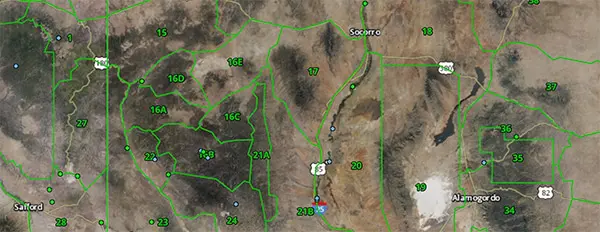
Here at ElkBros, we often get emails from elk hunters either in the planning stages, researching areas to apply for in an upcoming draw, or wanting some information to make choices for an OTC (over the counter…a license that can be purchased from a vendor for a hunt) Unit.
Just to make it clear from the start, recommending particular units is something that we don’t do or want to do. If we did start down that road, it would really take way too much of our time. Even more importantly, we don’t want to be responsible for whether or not a unit we suggest pans out for you, your hunting style, conditioning, body type or abilities. And in all honesty, I would rather give you the tool sets to be able make your own decisions rather than me doing the work for you. Give someone a fish, you feed them for a day. Teach someone to fish and you feed them for a lifetime.
So with that said, I want to share with you what I would look for, as well as what I wouldn’t look for, when researching units. And maybe even… well… teach you how to fish.
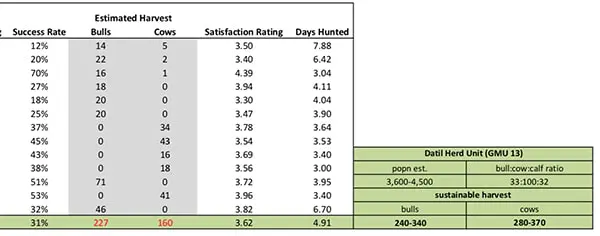
Each state’s Department of Wildlife (Which may be called many things. In New Mexico, ours is the NM Game & Fish) has extensive research on their elk herds in order to make appropriate decisions to insure the continued health of their herd. Finding that information on the agency’s website is a huge help in making decisions on the regions or hunt units that would provide quality opportunities. In fact, you will find multiple years of data to be able to look for unit or overall trends. Some of the data available for a hunt unit and each of the past hunts could be things like Success Rate, Number of Licenses Sold, Days Hunted, Unit Acreage, Bull to Cow to Calf ratios, Herd Population, Number of Bulls and Cows harvested and even more depending on the extensiveness that State’s research.
Now, here is what I want you to do. Using the list of some of the possible data just mentioned above and without any guidance, I want you to identify which areas of data would be the most important to you. Which column are you going to first? What other columns are most important to you? Why were those the most important?
I can tell you now, that you most likely went to the very same categories as 90% of all other hunters, for some of the very same reasons. YOU WANT TO KILL AN ELK!
And, since that is the case, you are wanting to go where others are finding success and getting it done. Makes TOTAL sense.
Bare with me now, and let me tell you a childhood story.
When I was a kid in the backwoods of the Carolinas, our family fun was hunting and fishing. On one of our fishing outings, Mom and Pops loaded all six of us kids up in the Van and we headed down to fish the creek by the Moyock Marina. Lol..Not much of a Marina as most people think. One concrete boat ramp, a small burger and beer place with a room that had a pool table in it, and a few row boats you could rent if you wanted.
When we got to the creek, the whole show started off with us boys running to our hot spots and the girls pretty much staying together where the creek was most accessible. And Pops, well he kinda just hung back and watched the show for a bit. Mom was content to have her own quiet time.
Mine and my brother’s hot spots weren’t so hot and before you knew it, the girls were all yelling when they hooked a fish. My brother and I looked at each other from across the ways and just laughed at them and all the noise they were making. We were both thinking the same things, “Lucky catch” and “it won’t be long till they scare every fish in the county away with all that noise!”.
Next thing we know, after the 5th or 6th fish for the girls and nothing happening for us, not even a bite…my brother and I started gravitating to where all the action was taking place. Pops? Well he was still just taking it all in.
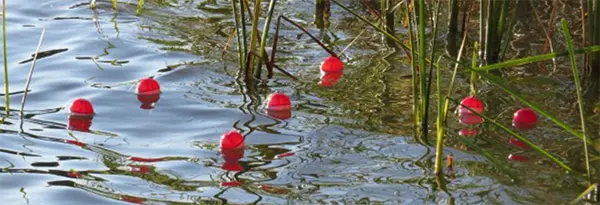
It didn’t take long and there we were, all six kids fishing from the same spot. Arguing over who was there first, making all kinds of noise and the fishing…well needless to say it slowed down to nothing with all those bobbers slapping the water in the same place. But my brother and I just knew that our skill WAYYYY outweighed our sister’s luck and we were sure to catch a biggin’ any time now.
It didn’t take long until the girls were tired of the competition and the lack of action and decided to pull stakes and rearrange Mom’s quiet time. All good by us…we now had the whole fishing hole to ourselves.
We must of hammered that hole with every bait, lure and technique known to man. Surely, with all we knew, we just had to be able to catch some fish. If the girls had that kind of success here a while ago, we should be killing it!
With supper time coming on, Mom gave the yell that it was time to pack it up. Empty handed except for our poles and bait, we headed back to the van and took the ribbing from the girls. Man, I sure hated that walk of shame. We would never hear the end of this one. Well, at least Pop didn’t catch any fish either I thought, and then I realized…where is Pops?
Turning to scan the Riverside, I spotted Pops… just a little ways from where I had started out and carrying a stringer of some 10 fish! That sly dog had set back and watched the whole show. Just waiting to see where all of us gravitated and then he quietly slipped in and without a word, …that SLY DOG!
I learned some great lessons that day. Lessons that I am going to share with you today:
Lesson One: Don’t go to where someone has “Caught” fish. Go to where you can “Catch” fish.
Lesson Two: With too much pressure, even a great spot can become a lost cause.
Lesson Three: Look and understand what “Most” people are going to do, and find the holes missed.
Lesson Four: It doesn’t matter how great of a fisherman you are or how many lures you have… if the fish are gone, the fish ARE GONE.
Lesson 5, and Most Importantly: Be a SLY DOG!
Now, let’s talk about that data from before again. Probably the number one piece of data that 90% of the hunters are going to look at first is the Harvest Success Rate for that unit. Rightfully so, and it’s a great indicator of what is possible. But just like my lessons learned above, remember that this statistic tells you where elk “have been” killed. Not where they “are going” to be killed. There are so many variables that can change that number from year to year.
By looking at the numbers, you don’t know:
…the skill set and condition of the hunters that were hunting?
…how many opportunities were blown that should have ended in a kill?
…how many days each of the hunters put in…how persistent they were?
…how much land in that unit is private and hunting elk less pressured?
…were there any environmental conditions that made that area better or worse that year?
But one thing you can tell from those numbers, when it comes to Success Rate, is whether or not a Unit will have hunters flocking there or avoiding it. Most hunters want to go where there has been success. Put their bobber in the water and catch a biggin’. They are going to immediately write down the units with the highest success rate and either apply there or buy an OTC tag for that unit. Just human nature. But that is the very thing you can use in your favor!
Am I telling you to hunt the Units with the lowest success rate? Absolutely not. But I am telling you NOT to hunt the units with the Highest Success Rates. Be the “Sly Dog”. Look at what others are going to do and find those holes that will offer you the best opportunities to harvest your elk.
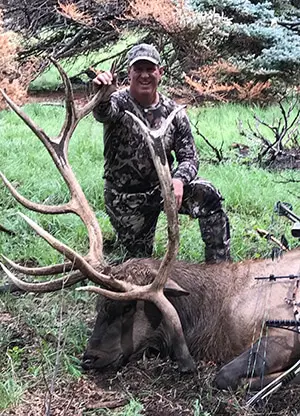
Understand this… the the area I have hunted for many years originally had a very low success rate. Below 10 percent. However, I personally have filled my tag the last 34 of 36 years. So your focus needs NOT be on what others “Have Done” in an area. It should be on whether or not there are elk there. Whether the terrain fits your hunting condition and style. And whether the unit fills your requirements for what the elk need at the time you will be hunting them.
Let’s now talk about the other areas of data and how you can develop a solid lead on an area that will..1) Not jump out as a top spot to others and 2) could provide multiple opportunities. It will then be up to you and your skill set to make the best of those opportunities.
Data Areas to Consider:
Success Rate….well kinda…but let’s get it out of the way
The first column that everyone goes. Success Rate is never a data column that I use first or on it’s own. I list it here so you can see how I use it along with other data below to get a better picture. Remember, Success rate does not tell you what is GOING to happen. It tells you what HAS happened. By the time my brother and I got to our sisters’ hot spot…it “won’t hot no mo”. You will see below, how I do bring in Success Rates while considering other stats. I can tell you that any hunt unit with a success rate better than, equal to, or in between 20 to 30 percent, is going to be an attention magnet. Look elsewhere.
The one thing that I do look for though, is when hunts in the same Unit but at different times, have a glaring difference in success. Let’s say that you look at an Archery Hunt Unit that has two different hunt dates. An early hunt and a late hunt. Let’s, for sake of this exercise, say that the first hunt during the first half of September had a 6% success rate. However, the second hunt during the second half of September had a success rate of 25%. Did the elk magically appear in the second half of the season? Heck no they didn’t. They were there all along, but the hunters hunting that first hunt did not know how to hunt them. Plain and simple.
Those cows, that were attracting the bulls and making them go crazy in the second half of the season, we’re there all along. What happened is the elk actually came into a mode that better suited the skill set of the hunters. Not that the skill set of those hunters were necessarily any better than that of the first group.
But here is what is important. That first hunt, if hunted correctly, is a GREAT hunt. But most hunters are going to not relate the information correctly and avoid that hunt. Keep that in mind.
I do want to point out though, that such a disparity can truly happen in one area from September to Mid October to Late December. The bulls that you are hunting will be at different locations and travel miles and miles due to their need at those times. To see a huge disparity in success from September to December is not only not a surprise, it is expected.
Herd Size or Population
When you see this stat, it’ can generally be more of a region than any particular unit. If it is narrowed to a unit, even better. Be aware when looking at this stat, that it could show one area to have a larger population, but be deceiving because the size (acreage, square miles…etc) of the area could be so much larger. I like to get a better idea by dividing the acreage into the population number to give me a more true picture of the population density. Now I can compare apples to apples. From there, I like to narrow things somewhat by considering how much of that region’s Elk Habitat tis hosting the majority of that population. This takes further research, but if you have done your homework and have a well thought out picture, a call to an area biologist now has the basis for a more in depth and positive conversation. Also, if an area has a good population density and has in the past had decent Success Rates of 10 to 18 percent, interest perks up.
Bull to Cow Ratio
As an Archery Elk hunter, this is huge to me because a large Bull to cow ratio means more competition during the Rut. Which in turn means more vocal bulls. A win win. Again, when guys see a high Bull to Cow ratio of 30 plus, or 40 to 50 bulls to every 100 cows, that is an area that jumps out and attracts attention by lots of people immediately. I am looking for something between 20 to 25 bulls to every 100 cows. Unless the area has a low success rate with a little bit higher Bull to Cow Ratio. I may give that area more attention knowing that past lower successes could be due to the difficulty of the area or lack of hunting days or even the skill sets of past hunters. Those type of areas are of interest to me. Especially areas that are more difficult to get into. If I find an area with a good solid population, good bull to cow ratio and a low Success Rate…that area screams for me to check it out.
Calves to Cow Ratio
This indicator really shows you whether or not the herd is growing and what the future potential is for an area. I like to go back several years to get a trend if I can, but the higher the ratio, 30 to 40 (calves to every 100 cows) or above, the better. When you have high calf crops, it also shows that the elk are finding quality graze and habitat in that area. A good sign because Cows like to use the same calving areas year after year. And remember where the cows are during the Rut, so are the bulls.
Number of Licenses Sold
I use this stat a lot like I do the Herd Population stat. It just gives me an idea of the hunter density in the hunt Unit. One thing when figuring that density, you need to not consider total area. Again consider “Huntable area” that is going to attract hunters. Consider what is and what is not elk habitat. This helps with the apples to apples comparison. For people wanting to get away from crowds, this might be an important stat. For me, if the area has good potential, It really does not phase me that much.
Average Number of Days Hunted
This stat often helps to give better insight into the Success Rate of a particular hunt. If you see a ‘low average number of days’ hunted and a higher Success Rate of let’s say 10 to 18 percent, then that is a sign that the area had solid potential and hunters did not need as many days to get it done. If you see a low ‘number of days hunted on average’ and low Success Rates, the picture can get somewhat murky. Was the low success because hunters did not put in the time? Or, was the hunt so bad that people bailed early?
But if you see a high ‘average number of days hunted’ and a low Success Rate of 5 to 8 percent, that could very well tell you that the quality of the hunt or even possibly the quality of the hunters themselves was not so great.
Other Things to Consider:
Burns baby, Burns!
One of my favorite major points when looking for great hunting in a unit. If you have an OnX subscription, you can enable a “Historic Wildfires” layer that will show you the locations of all past burns with the dates of the fire. A 3 to 4 year old fire is “PrimeTime” and a great asset to any Elk Habitat as well as a great asset to you as an elk hunter. Either Archery or Rifle. The nutrient rich plants growing are elk magnets and always on my A-List. Fringe areas in a Unit with thick adjacent ridge cover, dark timber and water close by are a… Check, Check and Check when considering the things elk need.
“Sly Dog” Holes
I know if Pops ever got to elk hunt, he would have just sat back and watched all the other hunters heading to the best access to get into the back country or hunting from the trail heads. He would have looked at the areas everyone was passing. These holes only 1 to 2 miles from the road that don’t have trails or roads for another 1 to 2 miles in any other direction. Then, like the Sly Dog he was, he would have slipped in and quietly hammered them. Yep, I was watching Pops.
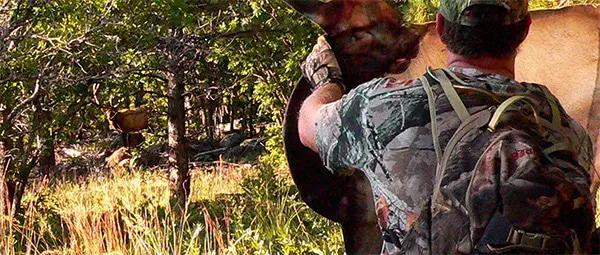
When everyone goes for pretty…. Go Ugly
Some of THE BEST elk hunting country is stuff that you just wouldn’t think. Most guys picture the high mountain meadows, aspen parks and tall pines. Great for seeing elk and if you are a rifle hunter, great place for killing them too. But not so for the Archery Elk Hunter. It’s those areas that attract all the attention. And it’s those areas that are the most difficult to kill a bugling bull. If you can see them, well then, they want to see that cow or bull calling to them. If you want to kill a bull with your bow, find the thickest timber, scrub oak or juniper that is holding elk. That my friend is a nugget. That is where the magic happens!
Is any of this above easy to do? Definitely not. If it was, then everyone would be doing it. But they aren’t. It’s not rocket science either. It’s all about finding the data. Now you have a key on how to decipher and understand what you are looking for. There are subscription based websites out there to do a lot of this work for you, for a price. But you can definitely do it yourself. It just takes work.
Again, my goal as your Coach is not to enable you. It’s not to GIVE you that fish so you can eat for a day. My goal is to help you with the tool set. Once combined with effort, persistence and patience, you have now been given a greater gift than a single meal. You my friend have been taught to fish. A gift from the Ol’ Sly Dog himself.
Until next time. Keep your broadheads sharp and your powder dry!
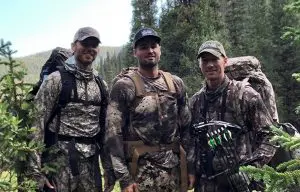

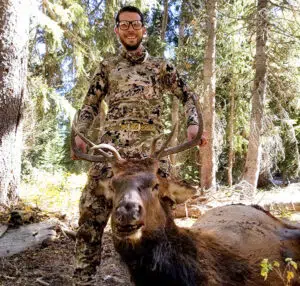
Similar to last yr in Colorado. I was based at a busy trailhead. Everyone going way back bivy hunting. I was on elk consistently in the first little drainage off the trailhead. Everyone else blew on past. But truth is,I was luckily put on this by a couple ole timers that had hunted there annually for 26yrs. Guess they got tired of my aimless wondering Lol. Great article! Thanks
Thanks Jon! Sounds like you ran into a couple of those “Sly Dogs”! Lol. Hey bud, take it where you can get it!